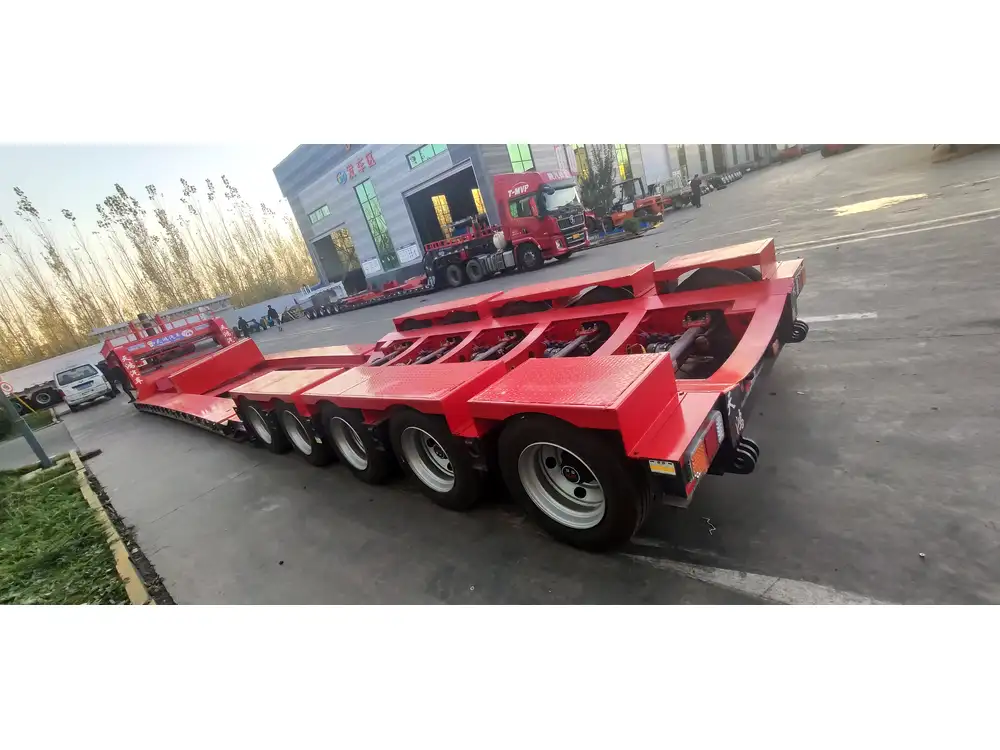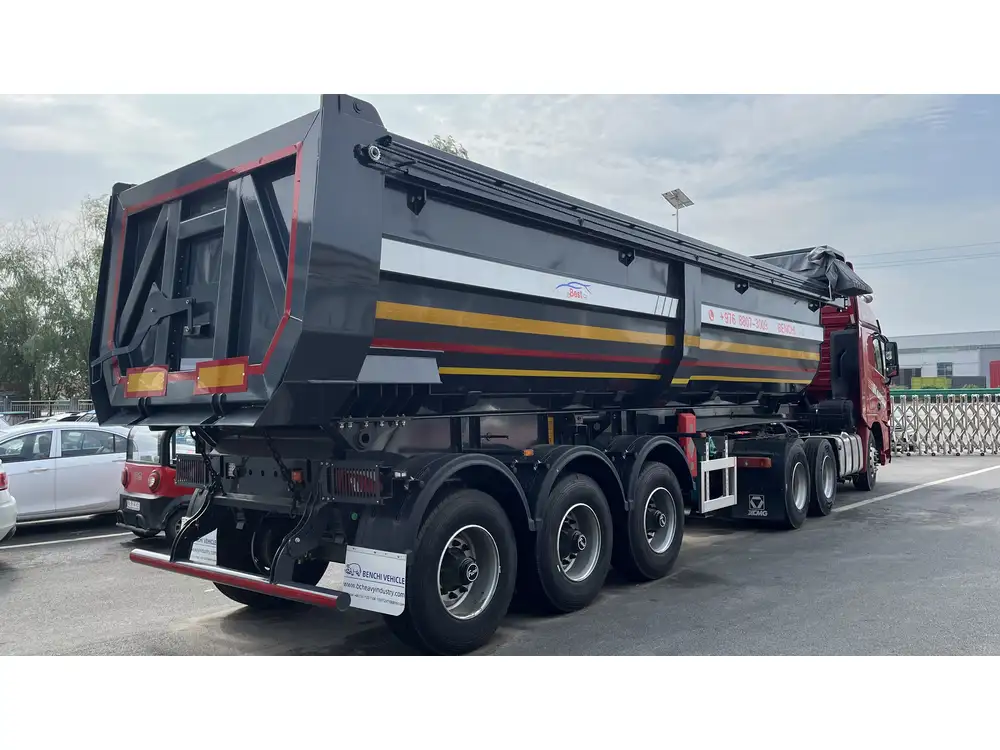When planning a move or transporting goods, understanding the specifications of the equipment you’re using is critical. One of the most frequent questions individuals have is, “how much does a U-Haul trailer weigh?” This inquiry not only pertains to the physical limitations and logistics involved in relocation but also impacts vehicle compatibility, loading safety, and fuel efficiency. In this article, we will thoroughly dissect U-Haul trailer weights, various trailer types, their functionalities, and the implications of these weights on your moving experience.
Table of Contents
- 1. Types of U-Haul Trailers and Their Weights
- 2. Importance of Knowing the Trailer Weight
- 3. Weight Distribution and Load Limits
- 4. How to Safely Tow a U-Haul Trailer
- 5. Frequently Asked Questions
1. Types of U-Haul Trailers and Their Weights
U-Haul offers several trailer options designed to accommodate different needs, whether for local moves or cross-country transport. Here’s a breakdown of the common trailer types along with their respective weights:
| Trailer Type | Max Gross Weight (lbs) | Empty Weight (lbs) | Payload Capacity (lbs) |
|---|---|---|---|
| Utility Trailer | 2,500 | 800 | 1,700 |
| Cargo Trailer (5′ x 8′) | 2,500 | 1,000 | 1,500 |
| Cargo Trailer (6′ x 12′) | 3,000 | 1,800 | 1,200 |
| Cargo Trailer (10′ x 8′) | 3,450 | 1,900 | 1,550 |
| Car Trailer | 3,500 | 1,000 | 2,500 |
| Motorcycle Trailer | 1,200 | 400 | 800 |
This table provides a clear comparison of each trailer type used for transporting various items. Note that the Max Gross Weight includes the weight of the trailer plus the cargo inside.

1.1. Utility Trailers
Utility trailers are a versatile choice, perfect for transporting landscaping equipment, furniture, or bulky items. Given their lower weight compared to larger cargo options, they are commonly towed by smaller vehicles.
1.2. Cargo Trailers
Cargo trailers come in several sizes and are the go-to for safe transport of personal belongings during moves. The various dimensions allow for flexibility; smaller sizes for minimal gear and larger sizes for complete household moves.
1.3. Car and Motorcycle Trailers
Intended for vehicle transport, these trailers are engineered to safely carry cars and motorcycles. The weight specifications ensure that they can handle the weight of most standard vehicles while remaining manageable for towing.

2. Importance of Knowing the Trailer Weight
Understanding the weight of a U-Haul trailer is crucial for several reasons:
2.1. Vehicle Compatibility
Not all vehicles can tow the maximum weight. Knowing the trailer weight allows you to match it accurately with your vehicle’s towing capability. Each vehicle comes with a manufacturer-recommended towing capacity, and exceeding it can lead to significant safety hazards. Consult your vehicle’s owner manual to determine its towing limits.
2.2. Legal Regulations
Different states and regions have regulations regarding towing weights. Being aware of U-Haul trailer weights helps you remain compliant with local laws to avoid fines and ensure safe travel.

2.3. Load Management
The payload capacity provides insight into how much extra weight can be added without surpassing the trailer’s max gross weight. Overloading can result in poor handling, increased braking distances, and heightened risk of accidents.
3. Weight Distribution and Load Limits
Successful trailer towing encompasses more than just knowing the weight; it also involves understanding load limits and weight distribution. Here’s what you need to consider:
3.1. Centers of Gravity
When loading a trailer, balance is paramount. Ideally, the weight distribution should be even across the trailer axle. An uneven load can cause swaying, which puts the driver and other road users at risk.

3.2. Towing Configuration
Towing configurations play a critical role in the effectiveness of a move. Distributing heavy items towards the front of the trailer helps maintain control and prevents undue stress on the hitch.
3.3. Safety Precautions
- Check Tire Pressure: Properly inflated tires help manage the trailer’s load and enable better fuel efficiency.
- Secure Cargo: Utilize tie-downs, straps, or netting to secure items and prevent shifting during transit, which can alter weight distribution unexpectedly.
3.4. Tongue Weight
This is the downward force that the tongue of the trailer exerts on the hitch of the tow vehicle. A good rule of thumb is that the tongue weight should be around 10-15% of the total trailer weight to maintain stability. For instance, if your trailer weighs 2,000 lbs, aim for a tongue weight of between 200-300 lbs.

4. How to Safely Tow a U-Haul Trailer
Towing a trailer safely involves understanding equipment, vehicle strain, and conditions that can affect towing performance. Here’s a structured approach to ensure safety throughout your journey:
4.1. Pre-Towing Checklist
– Ensure Compatibility
- Confirm your vehicle’s towing capacity.
– Inspect the Hitch
- Ensure that it is compatible with the trailer coupler.
– Evaluate Trailer Lights
- Proper functioning of brake lights and turn signals is essential.
– Load Testing
- Gradually load the trailer and check weight distribution.

4.2. Driving Tips
– Acceleration and Braking
- Allow for additional distance to stop; trailers require more time and distance to brake.
– Lane Changes
- Use mirrors effectively and check blind spots as trailers have different lengths and widths.
– Turn Wider
- Because trailers swing out during turns, give ample room to navigate corners effectively.
4.3. Post-Trip Checks

– Inspect the Trailer
- Once you reach your destination, check for any damages and ensure that the load has remained intact.
– Review Mileage and Highways
- Consider the distance covered and conditions experienced to assess your towing capabilities for future reference.
5. Frequently Asked Questions
5.1. How do I determine the weight of the cargo I intend to carry?
To calculate the weight of your cargo, you can use a scale or look up the weights of commonly transported items.

5.2. Will a U-Haul trailer fit my vehicle?
To confirm fit, you should know your vehicle’s towing capacity and compare it with the specified trailer weights.
5.3. Can I attach accessories like bike racks to the trailer?
This depends on the trailer type and the added weight of accessories. Always check the payload capacity to ensure safe towing.
In conclusion, understanding how much a U-Haul trailer weighs along with associated features is pivotal for a successful moving experience. By educating yourself on the different trailer types, their capabilities, load management, and safety precautions, you can ensure that your hauling process is efficient and safe. Whether you’re relocating your household or transporting goods, this knowledge empowers better decision-making and prepares you for a smooth journey. Always perform thorough checks, maintain balance while loading, and drive responsibly for the best experience with U-Haul trailers.



